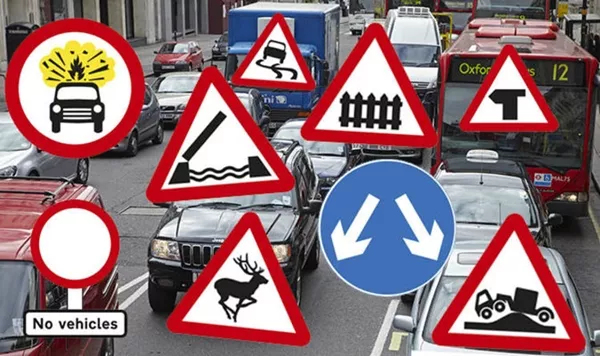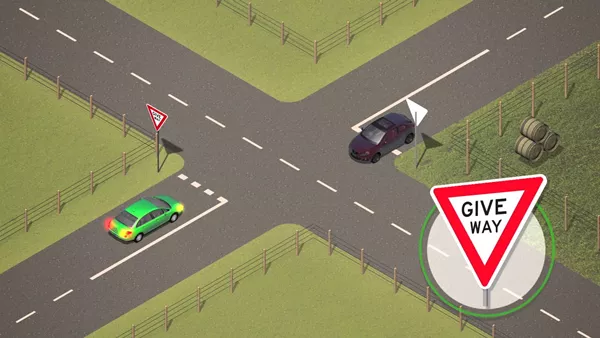Driving your own car in the traffic-laden roads of the Philippines is one of the most comforting feelings because you don’t have to sit next to a stranger and fall in line for long hours. However, driving always comes with responsibilities of not just making sure that you are safe but also ensuring that the public and your passenger are safe.
Responsible driving means you need to follow traffic rules in the Philippines which include following the different road signs in the Philippines.

Responsible driving = following road signs
Some of the basic road signs have long been inculcated in our minds during our younger years since they have been taught in school. Similarly, you were required to learn these signs during your driving lessons and before obtaining your driver’s license; otherwise, you won’t have that shiny little piece of ID.
The problem is that most of us, especially when we have been driving for years, tend to forget most of traffic signs and symbols in the Philippines, so we end up being apprehended both correctly and incorrectly. Hence, Philkotse.com will refresh your memory and help you understand the signs in the simplest manner possible.
I. Philippine Road Signs: An Overview of the Three Categories
Based on the Department of Public Works and Highways (DPWH) manual, the road signs in the country are divided into three categories, and they are:
A. Regulatory Signs
As the name suggests, these are signs under a regulation or law, which means that once you violated any of which, you’ll have a legal offense that might require you to surrender your license. These are usually self-explanatory since you regularly see them on the roads and are the ones that are commonly discussed.
They are usually circular or triangular in shape, and in red color or with a red outline since red has been known as a color that can easily be recognized by the eyes. Some also come in blue or green color depending on which sub-category they belong to.
A.1. Priority Signs
From the name itself, these signs give you, the driver, an idea who should go first, included are:
- The white STOP sign over a red octagon indicates that you must be at a full stop and parking within six meters from it is not allowed.
- The black GIVE WAY sign over a white inverted triangle with a red band means you must be ready and give way to the vehicles coming from the right side.
- The black LEFT TURNER MUST GIVE WAY sign over a white, vertical rectangle indicates that the driver making a left turn has the road right of way.

The Common Yield or Give Way Sign
A.2. Direction Signs
As the name suggests, these are traffic signs and symbols in the Philippines that signify the only direction you should take, like KEEP RIGHT, ONE WAY, and TWO WAY. They usually come in white arrows over a blue circle that is placed in a rectangle with a label.
A.3. Prohibitive or Restriction Signs
Apparently, these are signs which indicate what is not allowed to enter a certain road or if nothing is allowed to enter. They are easy to determine since they have a slash symbol. Some examples are NO ENTRY, NO U TURN, and NO OVERTAKING ZONE.
A.4. Speed Signs
Basically, these are signs that tell you the maximum and minimum speed that you can drive, as well as if the speed restriction is over.
- The maximum speed restriction can be easily identified since it comes in a black number over a white circle that has a red outline.
- A minimum speed restriction is a white number over a blue circle.
- When the speed limit restriction ends, you will see a white circle with a black outline and slash or a white rectangle with the word END with a maximum speed restriction symbol under it.
A.5. Parking Signs
These are signs that indicate whether you can park or not at the designated area at a given time, as well as whether you can unload and load passengers.
A.6. Miscellaneous Signs
These are signs that are placed in special areas and some of which include No Blowing of Horns and Fasten Seatbelts.
B. Warning Signs
These LTO traffic signs are intended to precaution drivers of what lies ahead of the road they are taking or what they should expect when they traverse the road in front of them. These will help them make a sound decision whether to continue or find another route. For visibility purposes, they usually come in triangular shapes that have a yellow color and a red outline. Some also come in green colors.
B.1. Horizontal Signs: These indicate the kind of road curve that you are about to traverse. Will it be a reverse curve? A sharp turn? A winding road? And the like. They come in white, red-bordered triangles that have black symbols of the type of curve or turn.
B.2. Intersection Signs: These are signs that will help you know if you are in an intersection, junction, or rotunda.
B.3. Advance Warning or Traffic Control Device Signs: In relation to the last sub-category, these are signs that are present when you are about to approach intersections. They include the Traffic Lights Ahead, Give Way Sign Ahead, and Stop Sign Ahead signs.
B.4. Road Width Signs: These are signs of traffic in the Philippines that help you know if you are about to approach a narrow road or when the narrow road is about to end.
B.5. Road Obstacle Signs: Clearly, these are signs that warn you of the possible dangers or items that might slow you down as a driver such as animals crossing, airplanes, landslide, and flood.
B.6. Pedestrian School Signs: These come in different shapes but are yellow in color and would mean that you need to slow down as children, PWDs, and bikers are common in the area. There might also be a few pedestrian lanes.
C. Guide or Information Signs
These signs are meant to provide you with the details of where you are, where facilities are, and how far the next town or city would be from where you are currently. They are usually rectangular in shape and come in green and blue colors.
C.1. Advance Direction Signs: These are usually present in national highways as they indicate which direction you should take if you are heading to a certain province.
C.2. Intersection Direction Signs: These signs are present at least one kilometer before you approach an intersection that you should take when going to a certain province.
C.3. Reassurance Direction Signs: These are signs that provide you with a guide of how many meters or kilometers you are away from a certain province or city exit.
C.4. Finger Board Direction Signs: These are more specific signs than the two as they point you to where you should go in order to find a tourist spot, town, or landmark.
C.5. Street and Town Names: As obvious as it sounds, they indicate which street or town you are in or about to enter or exit.
C.6. Service Signs: These signs usually come in blue with white symbols and/or labels. They indicate which service facility like hospitals and restaurants are available in the area.
C.7. Route Markers: These are white shapes with black numbers or arrows that identify the arterial road as well as give directions how far the arterial road is.

Sample Route Marker
II. Traffic Signs Philippines: Never Ignore Them
There is definitely a vast number of Philippine road signs and memorizing and learning each one of them can be a bit of a task. Also, people might question their significance because of the fact that there are already apps that help with driving directions.
However, these signs have been there for a long time since they are the most reliable things when it comes to road safety and direction, so you should be familiar with them.












